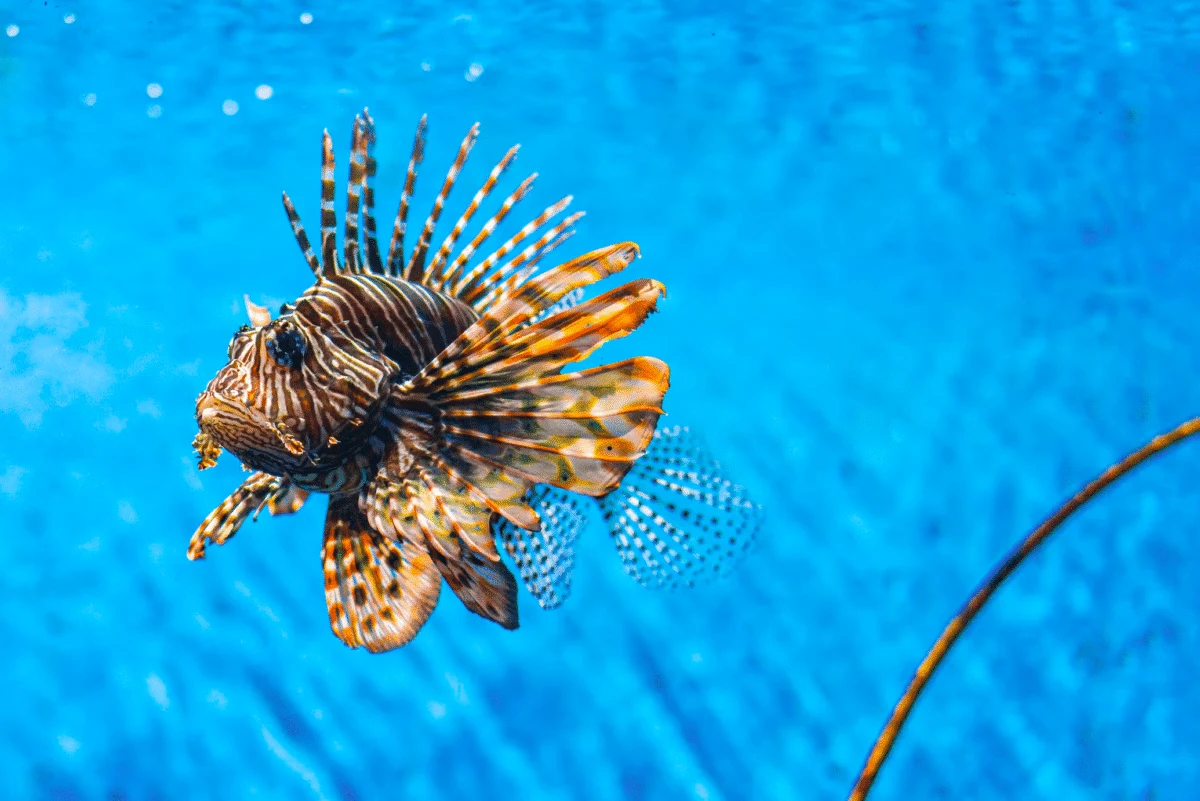When we think of oceanic predators, the great white shark is likely one animal that comes to mind; its razor-sharp teeth and powerful jaws make even seasoned divers look twice. But there’s another aquatic creature with an impressive set of predatory skills: the yet equally feared Lionfish.
While these fish can’t match a great white’s size or speed, their venomous spines dominate other sea residents – including humans! In this blog post, we’ll dive into this unique predator and explore comparisons between it and the great white shark to gain insight into how they interact in marine ecosystems.
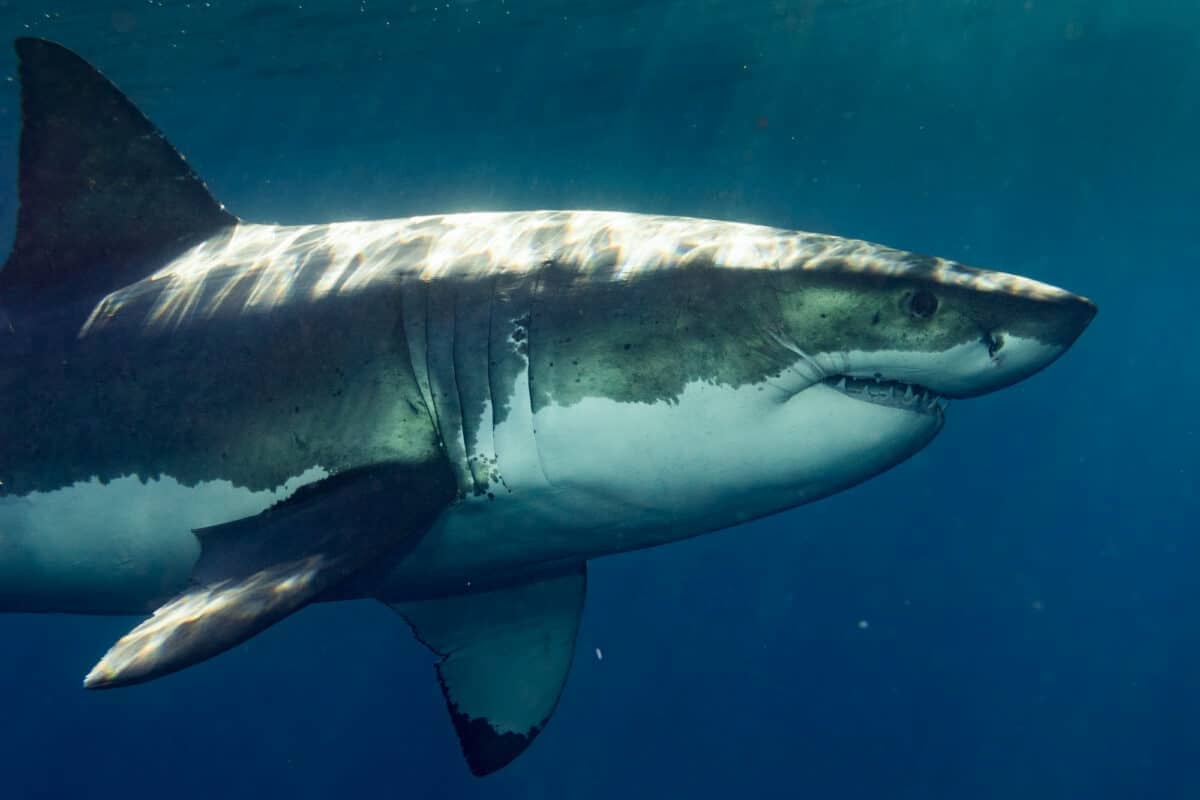
Key Points
| The Great White Shark is a massive, highly efficient predator that has been known to hunt a variety of prey. These powerful creatures can grow up to 20 feet in length and weigh up to 5,000 pounds. |
| Lionfish is a small, venomous fish that can grow up to 15 inches long. They are found in shallow waters and coral reefs, and their venomous spines serve as a defense mechanism. |
| Lionfish are known for their striking beauty, vibrant colors, and venomous spines. Both of these creatures possess their own unique set of skills; if we were to pit them against each other in a battle, the odds would heavily favor the Great White Shark. |
| Despite the Lionfish’s venomous spines, it would be no match for the sheer power and aggression of the Great White Shark. Lionfish pose little to no threat to the Great White Shark, as they are not a part of their typical diet. |
| The Great White Shark and Lionfish are two incredible creatures holding unique places in the ocean’s vast ecosystem. However, the Great White Shark would undoubtedly emerge victorious in a battle between them. |
Want to jump ahead? Click below
Read on for more information about each animal – especially if you want to learn what makes them such effective hunters!
Introducing The Great White Shark And Lionfish – A Comparison
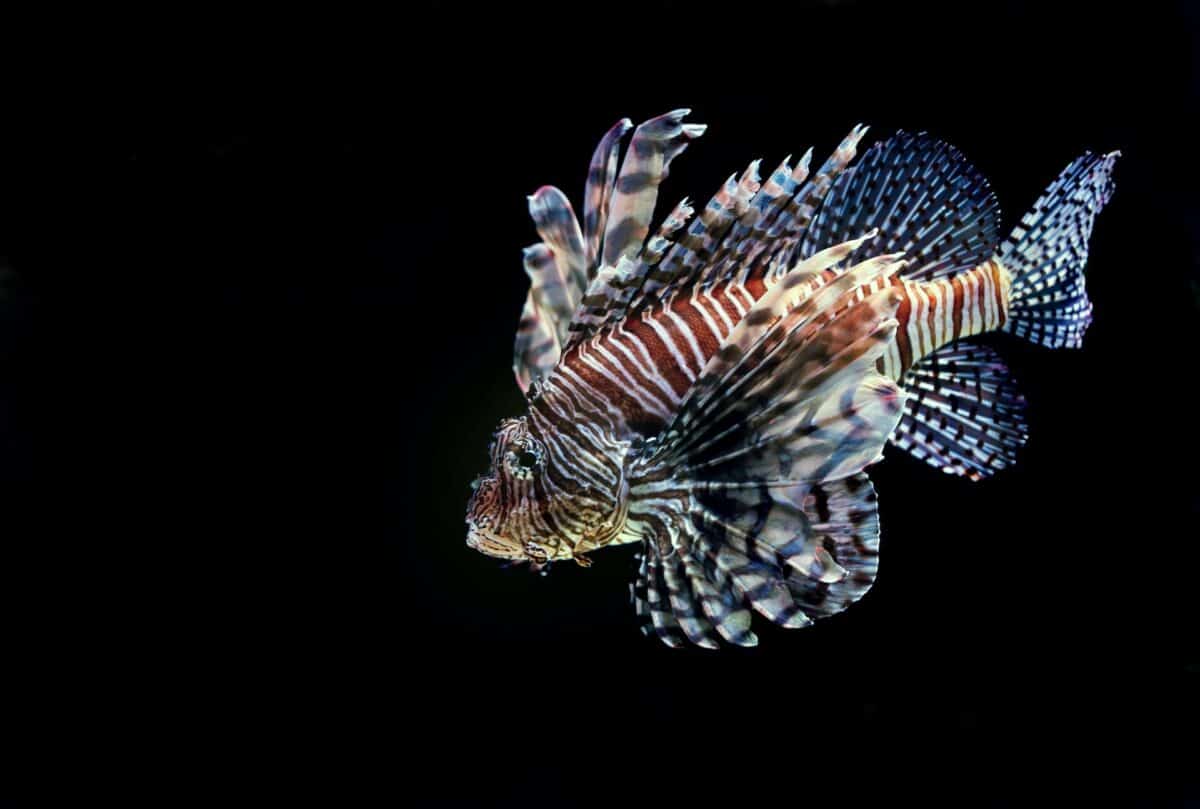
Regarding the Great White Shark and the Lionfish, comparisons can be drawn between the two ocean dwellers. The Great White Shark could be considered the definition of a predator, with its powerful jaws, sharp teeth, and massive bulk making it a legend in the ocean world.
In comparison, the Lionfish may not strike as being as fearsome, but their unique adaptations make them just as formidable. Their long, ribbon-like fins with venomous spines sway in the water in a beauty that belies their danger. These creatures have their strengths, and they are fascinating in different ways. Examining them together can deepen our appreciation for all kinds of animals inhabiting our oceans.
Comparison Table
| The Great White Shark | Lionfish | |
|---|---|---|
| Weight | length of 15 feet and a weight of up to 5,000 pounds | Small Fish |
| Jaws | razor-sharp teeth and a strong jaw | venomous dorsal spines |
| Habitat | oceans | coral reefs in the tropical waters of the Pacific, Indian, and Atlantic Oceans |
| Popularity | known for their infamous attacks on humans. | known to be voracious eaters |
What Does A Great White Shark Look Like, And Where Can It Be Found?
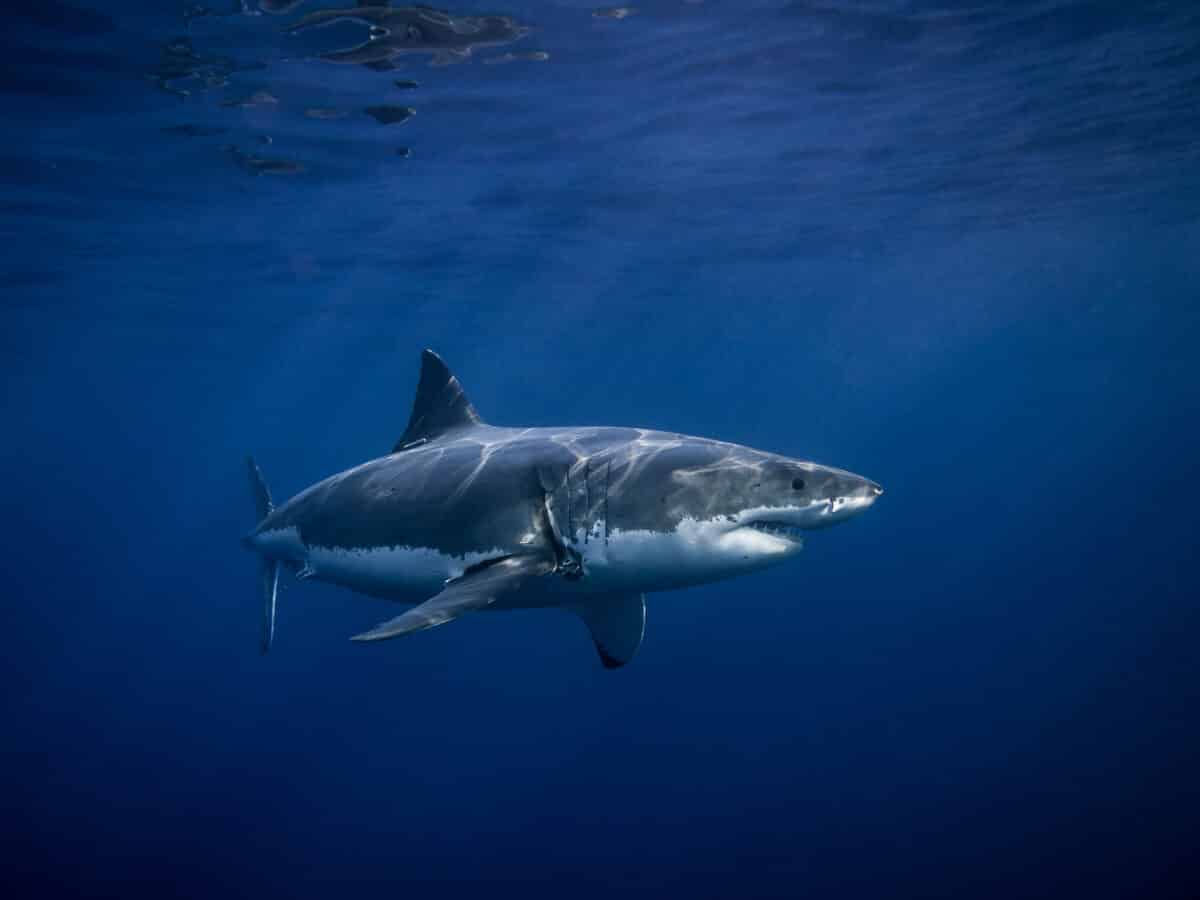
Great White Sharks are one of the most recognizable apex predators in the ocean. These magnificent creatures are known for their powerful jaws and serrated teeth, which can grow up to 2.5 inches in length.
Their bodies are sleek and streamlined, allowing them to swim at incredible speeds of up to 35 miles per hour. Great White Sharks are found in calm and temperate waters of the world’s oceans, typically near the coastline.
They can be found in areas such as the West Coast of the United States, South Africa, and Australia. Though their fierce reputation often precedes them, it’s important to remember that Great White Sharks play a vital role in maintaining the balance of our ocean’s ecosystem.
What Does A Lionfish Look Like, And Where Can It Be Found?
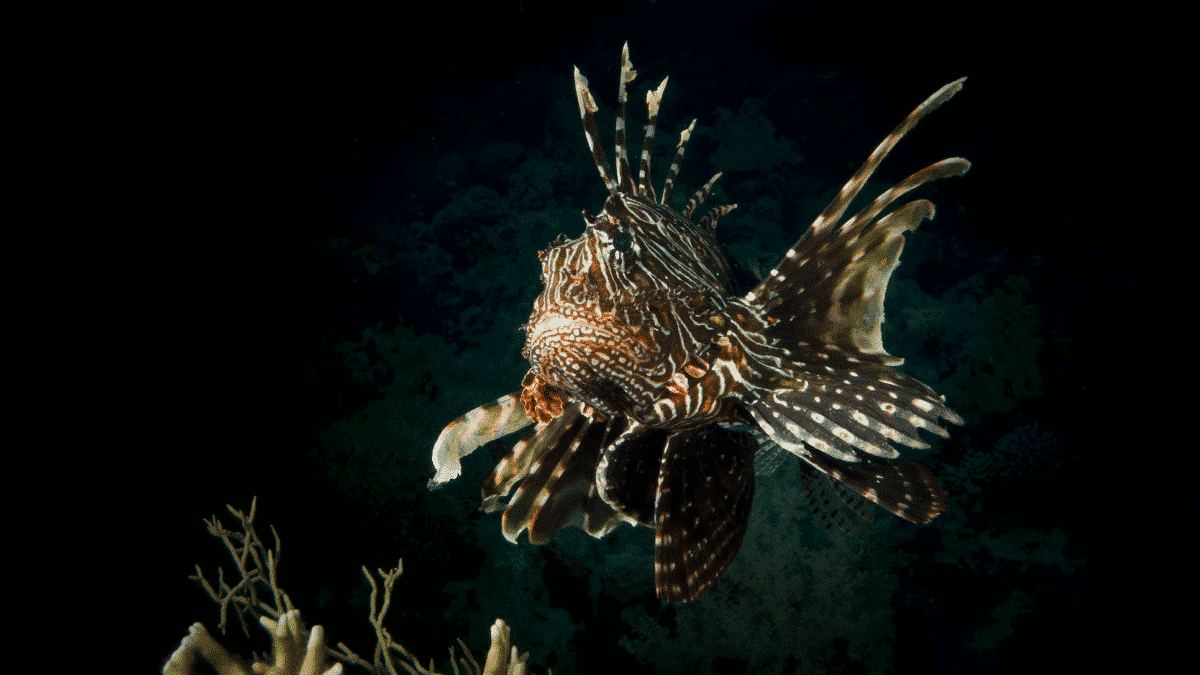
The Lionfish is a truly remarkable creature. Its intricate patterns and striking colors make it stand out in marine life. The Lionfish is a sight to behold with its long, flowing fins and extreme spikes. But where can you find this magnificent creature? Lionfish are native to the Indo-Pacific region but have since spread to other areas, including the Caribbean and the Gulf of Mexico.
They can be found in shallow reefs, crevices, and rocky outcroppings. If you’re lucky enough to spot one, take a moment to appreciate the beauty of this unique creature.
Great White Shark Facts: Habitat, Appearance, Predators
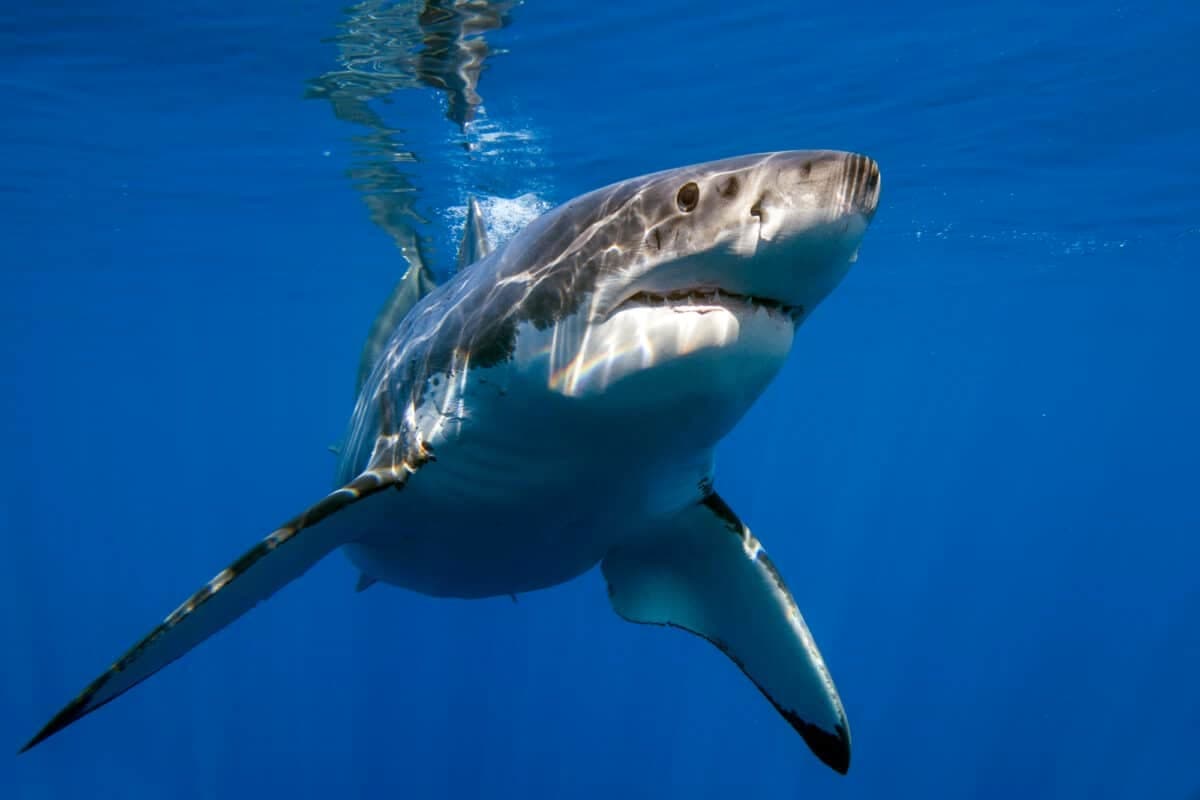
Habitat
Great white sharks are some of the most fascinating creatures in the ocean. They are known for their incredible strength and size. Did you know they can be found in the world’s major oceans? These sharks are found in a wide range of habitats. They are located from the coastlines of Australia to the waters off the coast of California.
They can also be found in calmer waters worldwide, including off South Africa and New Zealand. Great white sharks prefer waters with temperatures of 12-24 degrees Celsius, and they are particularly drawn to areas where there is a lot of prey available, such as seals, sea lions, and other marine mammals.
With their sharp teeth and powerful jaws, these sharks are top predators in their environment and remain an essential part of the ocean ecosystem.
Appearance
The Great White Shark is an infamous and fascinating creature known for its razor-sharp teeth and formidable presence. One of the critical aspects of the Great White’s appearance is its distinct coloration, which features a dark grey or blue-grey back and a white underbelly. This coloring is thought to provide camouflage when viewed from above or below, allowing the shark to blend in with the water and avoid detection by potential prey or predators.
The Great White’s sleek, streamlined body is also crucial to its ability to move through the water with ease and speed. With a pointed snout, powerful jaw, and piercing black eyes, this iconic species certainly looks the part of a top predator in the ocean.
Predators
The great white shark is a fascinating predator that has been the focus of many documentaries and movies. These mighty sharks are masters of the ocean, using their impressive size, strength, and hunting capabilities to prey on a variety of marine creatures.
Their sharp teeth, remarkable swimming speed, and great sense of smell make them efficient hunters that can take down even the largest prey. While great white sharks are known to attack humans occasionally, these incidents are sporadic and usually occur due to mistaken identity.
Despite their reputation, these majestic creatures are an essential part of the ocean’s ecosystem, and protecting them is crucial for maintaining the balance of our seas.
Lionfish Facts: Habitat, Appearance, Predators
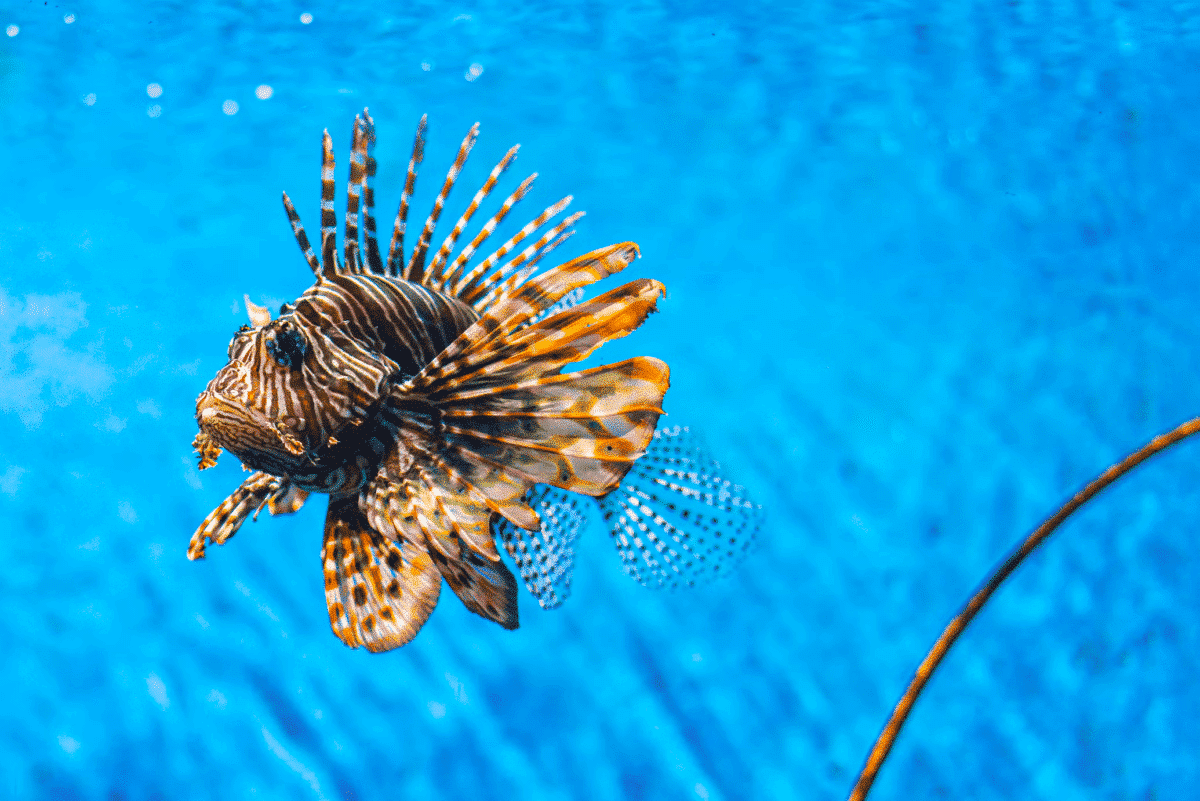
Habitat
The Lionfish is a unique sea creature inhabiting the Indo-Pacific region’s warm waters and the Caribbean Sea. Known for its striking red and white stripes and venomous spines, this fish has become a popular aquarium pet. It is also a dangerous invasive species outside of its natural habitat.
Lionfish have been known to thrive in various habitats, including reefs, rocks, and seagrass beds. Their ability to adapt to different environments has made them a formidable predator in these ecosystems. Despite their beauty, it is essential to remember that these fish can harm the marine life in their surrounding environment.
Appearance
One cannot ignore the beauty of the Lionfish. With its vibrant stripes and flowing fins, this species is truly eye-catching. The Lionfish has a unique and exotic appearance, unlike any other fish in the ocean.
Its multicolored stripes consist of white, red, and black hues. The fins of the Lionfish are also decorated similarly, creating a cohesive and stunning appearance. Overall, the appearance of the Lionfish is one of its most distinct characteristics. Thus, making it a popular choice for aquarium enthusiasts and divers alike.
Predators
Lionfish may seem like beautiful creatures with striking red and white stripes, but they are a formidable predator.
Generally speaking, Lionfish are not preyed upon by many other animals due to their toxic spines. They make them a less appealing meal option. However, a few animals are known to successfully hunt and eat Lionfish, including moray eels and some species of sharks.
These predators can overcome the toxic nature of the Lionfish and consume them whole. Thus, making for a somewhat rare but exciting sight in the ocean. Despite being a common aquarium pet, the Lionfish’s role as a predator in its natural habitat is not to be taken lightly.
Frequently Asked Questions
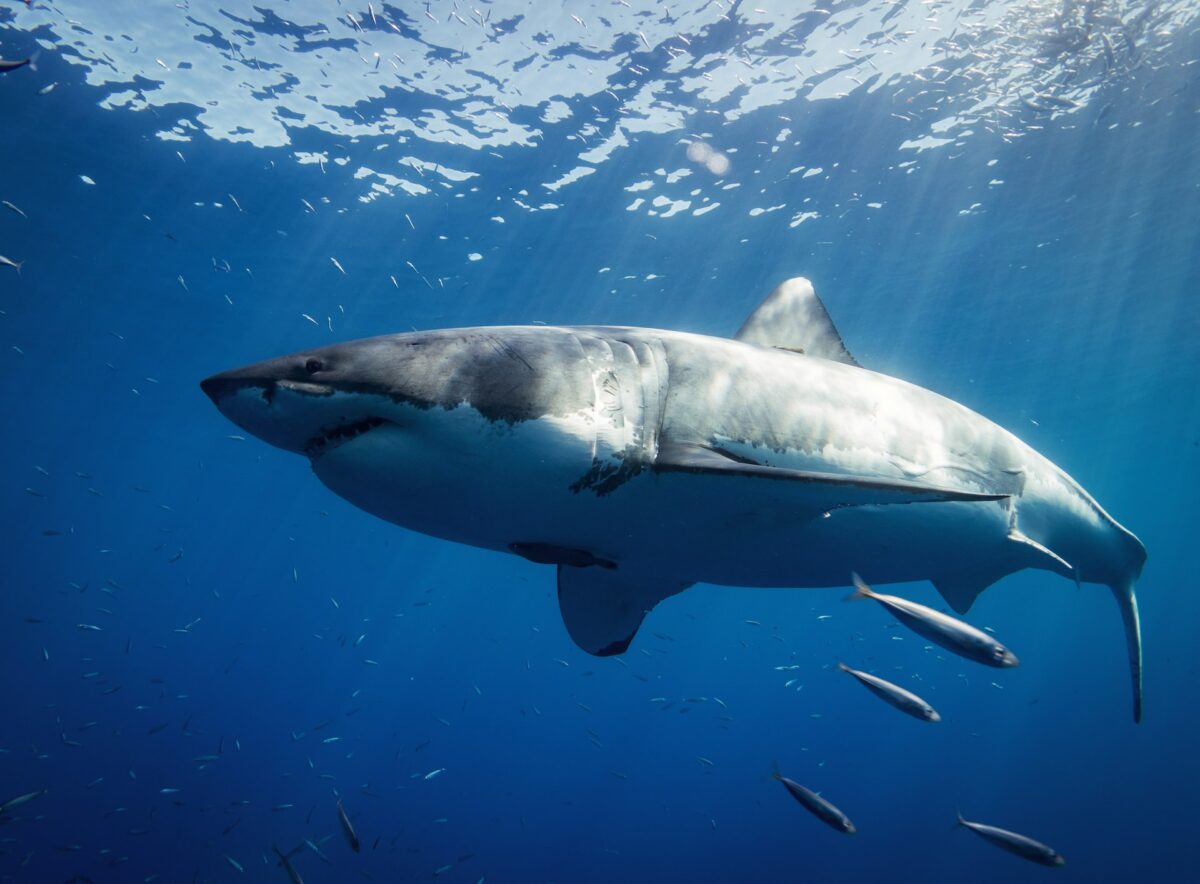
What are some interesting facts about the Great White Shark?
The Great White Shark, also known as Carcharodon carcharias, is one of the most feared predators in the ocean. With an average size of 15 feet and a weight of up to 5,000 pounds, the Great White Shark has the most formidable jaws. They are capable of generating a force of 18,000 newtons.
Why are Lionfish considered a threat to the ecosystem?
Lionfish is an invasive species originating from the Indo-Pacific region. They have spread to the Atlantic, Caribbean, and Gulf of Mexico. They have no natural predators and can reproduce rapidly. Lionfish are also venomous and can cause serious harm to other marine life. This makes them a significant threat to the ecosystem.
Who would win in a battle between a Great White Shark and Lionfish?
Although both creatures are formidable in their ways, a battle between a Great White Shark and a Lionfish is unlikely to occur in the wild. This is because these species occupy different ecological niches and habitats. However, if such a fight were to occur, the Great White Shark’s massive size, power, and agility would give it the upper hand against the smaller and less powerful Lionfish.
Wrapping Up with the Great White Shark Vs. Lionfish
The Great White Shark and the Lionfish are two of the most dangerous creatures in the sea. Although they might look frightening, their true power lies in the impact they can have on predators, prey, and humans alike. Regarding physical strength, experts have found that the Great White Shark usually has a slight edge over the Lionfish due to its larger size.
However, the Lionfish can out-ebb its much larger counterpart using venomous spines designed to ward off opponents and protect itself from harm. Ultimately, both species offer exceptional protection and aspects that make them fascinating creatures in their own right.
This post serves as a reminder that understanding and respecting these animals is critical for decreased human versus animal friction—not just for coexistence but also for conserving our oceans for future generations. With this in mind, it’s essential to take heed of warnings when entering areas where lions or great whites might be present.
Our final takeaway is clear; both creatures are mighty, capable of defending themselves, and should be taken when encountered in their native habitats.
Next up:
- Great White Shark vs. Blue-Ringed Octopus
- Fearsome Saw-Scaled Viper Bite
- Great White Sharks Vs. Stonefish
Join our Forum for free today!

- Kind Elephant Merciful To Lion Cubs - July 22, 2024
- Beachgoers Save Massive Shark Stranded In Florida - July 22, 2024
- Pit Bull Rescued From Being Chained Its Whole Life Gets A Surprise - July 21, 2024

